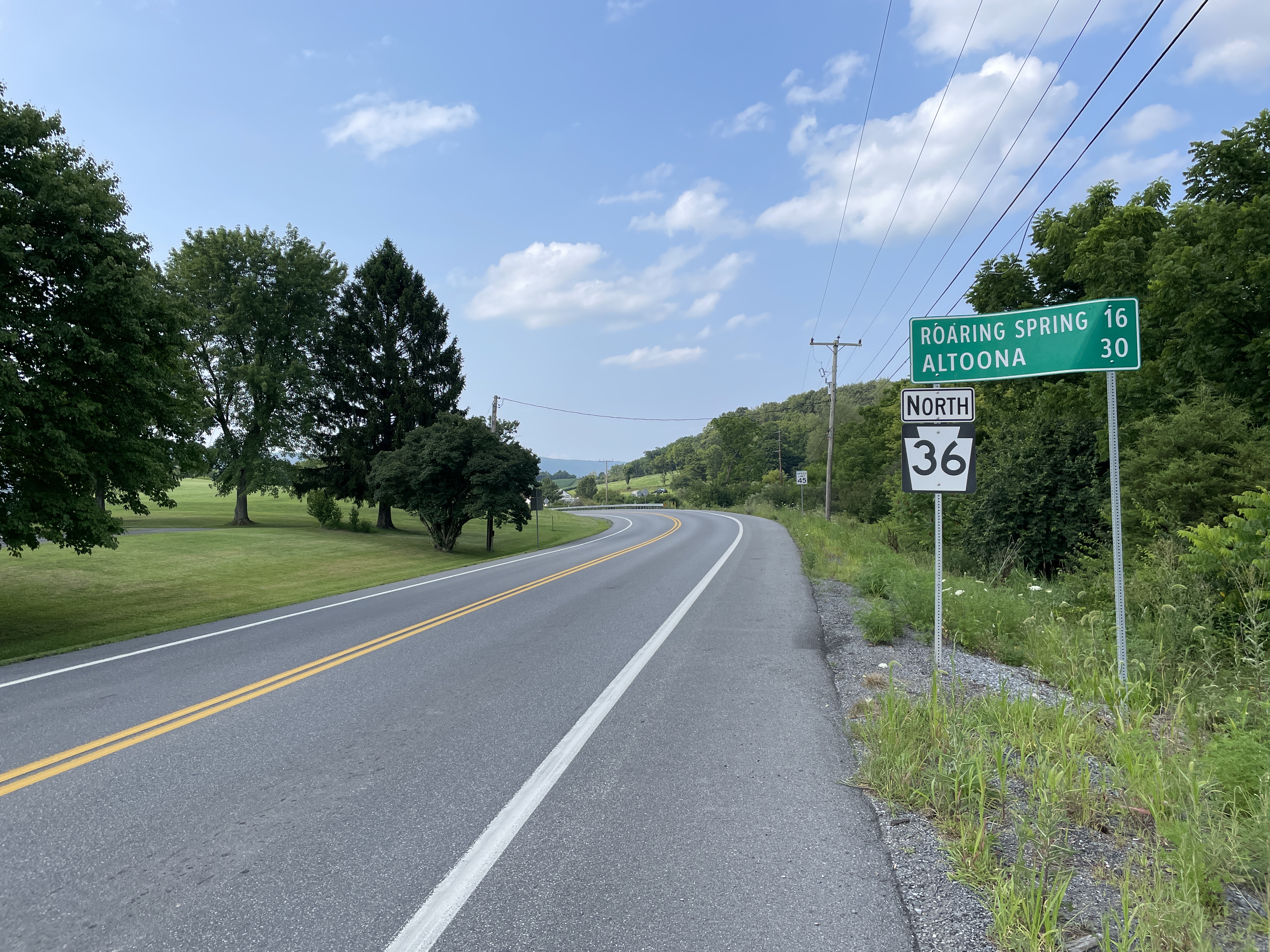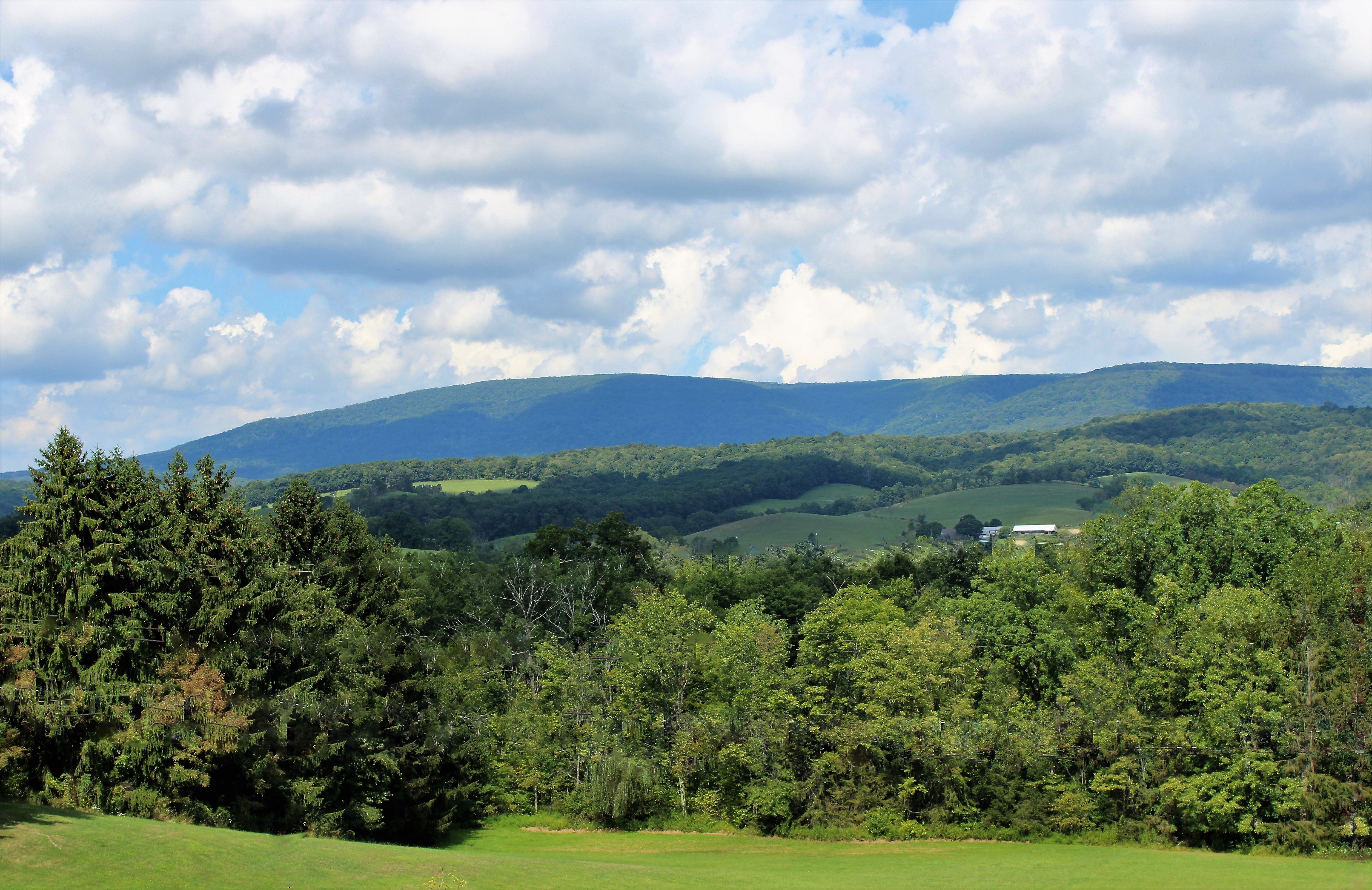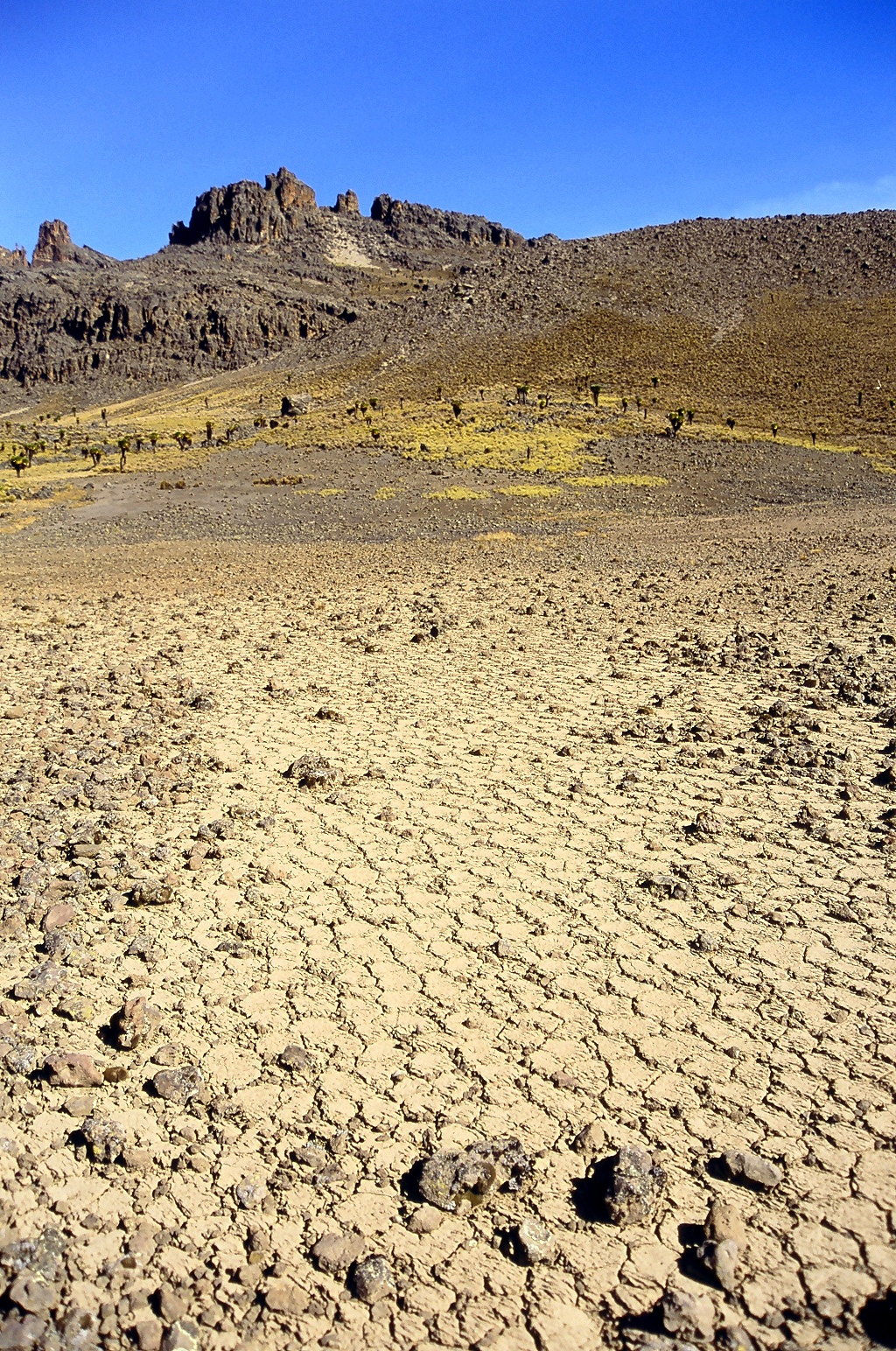|
Loysburg Gap
Loysburg Gap is a water gap where Pennsylvania Route 36 and the Yellow Creek pass through Tussey Mountain near Loysburg in Bedford County, Pennsylvania, United States. Yellow Creek flows eastward through the gap towards its junction with the Raystown Branch of the Juniata River. Periglacial boulder fields are present on both sides of the water gap, and the boulders are formed of the Silurian Tuscarora Formation The Silurian Tuscarora Formation — also known as Tuscarora Sandstone or Tuscarora Quartzite — is a mapped bedrock unit in Pennsylvania, Maryland, West Virginia, and Virginia, USA. Description The Tuscarora is a thin- to thick-bedded fine-gr ....Atlas of preliminary geologic quadrangle maps of Pennsylvania, Map 61, Pennsylvania Geological Survey, Compiled and edited by Thomas M. Berg and Christine M. Dodge, 1981. ''Hopewell'' Quadrangle (Compiled by D. M. Hoskins, 1976) External linksPeriglacial Boulders at Loysburg Gap video about the boulders at Loysburg Ga ... [...More Info...] [...Related Items...] OR: [Wikipedia] [Google] [Baidu] |
Boulder Fields Loysburg Gap PA
In geology, a boulder (or rarely bowlder) is a rock fragment with size greater than in diameter. Smaller pieces are called cobbles and pebbles. While a boulder may be small enough to move or roll manually, others are extremely massive. In common usage, a boulder is too large for a person to move. Smaller boulders are usually just called rocks or stones. The word ''boulder'' derives from ''boulder stone'', from the Middle English ''bulderston'' or Swedish ''bullersten''. Online Etymology Dictionary. Retrieved December 9, 2011, from Dictionary.com website. In places covered by s during s ... [...More Info...] [...Related Items...] OR: [Wikipedia] [Google] [Baidu] |
Water Gap
A water gap is a gap that flowing water has carved through a mountain range or mountain ridge and that still carries water today. Such gaps that no longer carry water currents are called wind gaps. Water gaps and wind gaps often offer a practical route for road and rail transport to cross the mountain barrier. Geology A water gap is usually an indication of a river that is older than the current topography. The likely occurrence is that a river established its course when the landform was at a low elevation, or by a rift in a portion of the crust of the earth having a very low stream gradient and a thick layer of unconsolidated sediment. In a hypothetical example, a river would have established its channel without regard for the deeper layers of rock. A later period of uplift would cause increased erosion along the riverbed, exposing the underlying rock layers. As the uplift continued, the river, being large enough, would continue to erode the rising land, cutting thr ... [...More Info...] [...Related Items...] OR: [Wikipedia] [Google] [Baidu] |
Pennsylvania Route 36
Pennsylvania Route 36 (PA 36) is a long state highway located in the U.S. state of Pennsylvania. The southern terminus is at PA 26 near the Hopewell Township community of Yellow Creek. The northern terminus is at PA 27 and PA 227 in Pleasantville. One of the longest and oldest highways in the commonwealth, PA 36 serves as a major connector between South Central and Northwestern Pennsylvania. In 1955, the highway was designated as the Colonel Drake Highway in honor of Edwin Drake. Route description Bedford and Blair counties PA 36 begins in the Bedford County hamlet of Yellow Creek at PA 26 along the Tussey Mountain range. The distance in Bedford County is brief as the highway enters Blair County and proceeds northward as the Woodbury Pike, intersecting several 800-series state highways like PA 866, PA 868, and PA 869. A short distance between Roaring Spring and the hamlet of McKee, PA 36 overlaps the east–west running PA 164. North of McKee, PA 36 become ... [...More Info...] [...Related Items...] OR: [Wikipedia] [Google] [Baidu] |
Yellow Creek (Juniata River)
Yellow Creek is a U.S. Geological Survey. National Hydrography Dataset high-resolution flowline dataThe National Map accessed August 8, 2011 tributary of the Raystown Branch Juniata River in Bedford County, Pennsylvania, Bedford County, Pennsylvania, in the United States.Gertler, Edward. ''Keystone Canoeing'', Seneca Press, 2004. Yellow Creek flows from Morrisons Cove through Loysburg Gap, a water gap in Tussey Mountain, before joining the Raystown Branch at Hopewell, Bedford County, Pennsylvania, Hopewell. Bridges * The Halls Mill Covered Bridge crosses Yellow Creek in Hopewell. ''Note:'' This includes See also *List of rivers of Pennsylvania References Rivers of Pennsylvania Tributaries of the Juniata River Rivers of Bedford County, Pennsylvania {{Pennsylvania-river-stub ... [...More Info...] [...Related Items...] OR: [Wikipedia] [Google] [Baidu] |
Tussey Mountain
Tussey Mountain is a stratigraphic ridge in central Pennsylvania, United States, trending east of the Bald Eagle, Brush, Dunning and Evitts Mountain ridges. Its southern foot just crosses the Mason–Dixon line near Flintstone, Maryland, running north 130 km (80 mi) to the Seven Mountains of central Pennsylvania, near Tusseyville, making it one of the longest named ridges in this section of the Ridge-and-valley Appalachians. The ridge line separates Morrison Cove from the Woodcock Valley and Friends Cove from the Black Valley. Tussey Mountain lies in, and the ridge line forms parts of the borders of, Centre, Blair, Bedford and Huntingdon counties. The Flintstone Creek runs around the southern end of the mountain in Maryland. North of there, small streams run through deep gorges, the Sweet Root and Rainsburg Gaps, near Martin Hill. At Everett the Pennsylvania Turnpike, U.S. Route 30, and the abandoned Huntingdon and Broad Top Mountain Railroad follow the Raystown B ... [...More Info...] [...Related Items...] OR: [Wikipedia] [Google] [Baidu] |
Loysburg, Pennsylvania
Loysburg is an unincorporated community in the Morrisons Cove area of South Woodbury Township, Bedford County, Pennsylvania, United States. It lies along Pennsylvania Route 36 and the Yellow Creek near the Loysburg Gap in Tussey Mountain Tussey Mountain is a stratigraphic ridge in central Pennsylvania, United States, trending east of the Bald Eagle, Brush, Dunning and Evitts Mountain ridges. Its southern foot just crosses the Mason–Dixon line near Flintstone, Maryland, run .... Once named "Pattonville" in 1844 but was renamed back to Loyburg in 1864. Northern Bedford County Middle/High School is located in the area. General information *ZIP Code: 16659 *Area Code: 814 *Local Phone Exchanges: 423, 575, 766 *School District: Northern Bedford County School District References External links Loysburg, Bedford County. PA town history The Complete Loy History the founder of Loysburg, PA [...More Info...] [...Related Items...] OR: [Wikipedia] [Google] [Baidu] |
Bedford County, Pennsylvania
Bedford County is a county in the Commonwealth of Pennsylvania. As of the 2020 census, the population was 47,577. The county seat is Bedford. History In 1750 Robert MacRay, a Scots-Irish immigrant, opened the first trading post in Raystown (which is now Bedford) on the land that is now Bedford County. The early Anglo-American settlers had a difficult time dealing with raids from Native Americans. In 1754 fierce fighting erupted as Native Americans became allied with the British or French in the North American front, known as the French and Indian War, of the Seven Years' War between those nations in Europe. In 1759, after the capture of Fort Duquesne in Allegheny County, Pennsylvania, Allegheny County, on the Allegheny and Monongahela rivers, English colonists built a road between the fort (which was renamed as Fort Pitt (Pennsylvania), Fort Pitt) to the newly built Fort Bedford in Raystown. The English defeated the French in the war and took over their territories in North Am ... [...More Info...] [...Related Items...] OR: [Wikipedia] [Google] [Baidu] |
Pennsylvania
Pennsylvania (; ( Pennsylvania Dutch: )), officially the Commonwealth of Pennsylvania, is a state spanning the Mid-Atlantic, Northeastern, Appalachian, and Great Lakes regions of the United States. It borders Delaware to its southeast, Maryland to its south, West Virginia to its southwest, Ohio to its west, Lake Erie and the Canadian province of Ontario to its northwest, New York to its north, and the Delaware River and New Jersey to its east. Pennsylvania is the fifth-most populous state in the nation with over 13 million residents as of 2020. It is the 33rd-largest state by area and ranks ninth among all states in population density. The southeastern Delaware Valley metropolitan area comprises and surrounds Philadelphia, the state's largest and nation's sixth most populous city. Another 2.37 million reside in Greater Pittsburgh in the southwest, centered around Pittsburgh, the state's second-largest and Western Pennsylvania's largest city. The state's su ... [...More Info...] [...Related Items...] OR: [Wikipedia] [Google] [Baidu] |
Raystown Branch Juniata River
The Raystown Branch Juniata River is the largest and longest tributary of the Juniata River in south-central Pennsylvania in the United States.Gertler, Edward. ''Keystone Canoeing'', Seneca Press, 2004. The Raystown Branch Juniata River begins along the Allegheny Front in Somerset County and flows to the confluence with the Juniata River near Huntingdon.U.S. Geological Survey. National Hydrography Dataset high-resolution flowline dataThe National Map accessed August 8, 2011 It passes through the boroughs of Bedford and Everett along its course. Approximately upstream of the mouth, the United States Army Corps of Engineers Raystown Dam forms Raystown Lake, the largest lake in Pennsylvania. Bridges * The Diehls Covered Bridge crosses Raystown Branch Juniata River in Harrison Township, Pennsylvania. ''Note:'' This includes * The Bridge in Snake Spring Township crosses Raystown Branch Juniata River in Snake Spring Township, Pennsylvania. ''Note:'' This includes * The Corbi ... [...More Info...] [...Related Items...] OR: [Wikipedia] [Google] [Baidu] |
Juniata River
The Juniata River () is a tributary of the Susquehanna River, approximately long,U.S. Geological Survey. National Hydrography Dataset high-resolution flowline dataThe National Map , accessed August 8, 2011 in central Pennsylvania. The river is considered scenic along much of its route, having a broad and shallow course passing through several mountain ridges and steeply lined water gaps. It formed an early 18th-century frontier region in Pennsylvania and was the site of French-allied Native American attacks against English colonial settlements during the French and Indian War. The watershed of the river encompasses an area of approximately , approximately one-eighth of the drainage area of the Susquehanna. Approximately two-thirds of the watershed is forested. It is the second largest tributary of the Susquehanna after the West Branch Susquehanna. Description The Juniata River forms in western Huntingdon County at the confluence of the Frankstown Branch and the Little Jun ... [...More Info...] [...Related Items...] OR: [Wikipedia] [Google] [Baidu] |
Periglacial
Periglaciation (adjective: "periglacial", also referring to places at the edges of glacial areas) describes geomorphic processes that result from seasonal thawing of snow in areas of permafrost, the runoff from which refreezes in ice wedges and other structures. "Periglacial" suggests an environment located on the margin of past glaciers. However, freeze and thaw cycles influence landscapes outside areas of past glaciation. Therefore, periglacial environments are anywhere that freezing and thawing modify the landscape in a significant manner. Tundra is a common ecological community in periglacial areas. History Periglaciation became a distinct subject within the study of geology after Walery Łoziński, a Polish geologist, introduced the term in 1909. Łoziński drew upon the early work of Johan Gunnar Andersson. According to Alfred Jahn, his introduction of his work at the 1910 International Geological Congress held in Stockholm caused significant discussion. In the field trip ... [...More Info...] [...Related Items...] OR: [Wikipedia] [Google] [Baidu] |
Silurian
The Silurian ( ) is a geologic period and system spanning 24.6 million years from the end of the Ordovician Period, at million years ago ( Mya), to the beginning of the Devonian Period, Mya. The Silurian is the shortest period of the Paleozoic Era. As with other geologic periods, the rock beds that define the period's start and end are well identified, but the exact dates are uncertain by a few million years. The base of the Silurian is set at a series of major Ordovician–Silurian extinction events when up to 60% of marine genera were wiped out. One important event in this period was the initial establishment of terrestrial life in what is known as the Silurian-Devonian Terrestrial Revolution: vascular plants emerged from more primitive land plants, dikaryan fungi started expanding and diversifying along with glomeromycotan fungi, and three groups of arthropods (myriapods, arachnids and hexapods) became fully terrestrialized. A significant evolutionary milestone during ... [...More Info...] [...Related Items...] OR: [Wikipedia] [Google] [Baidu] |




